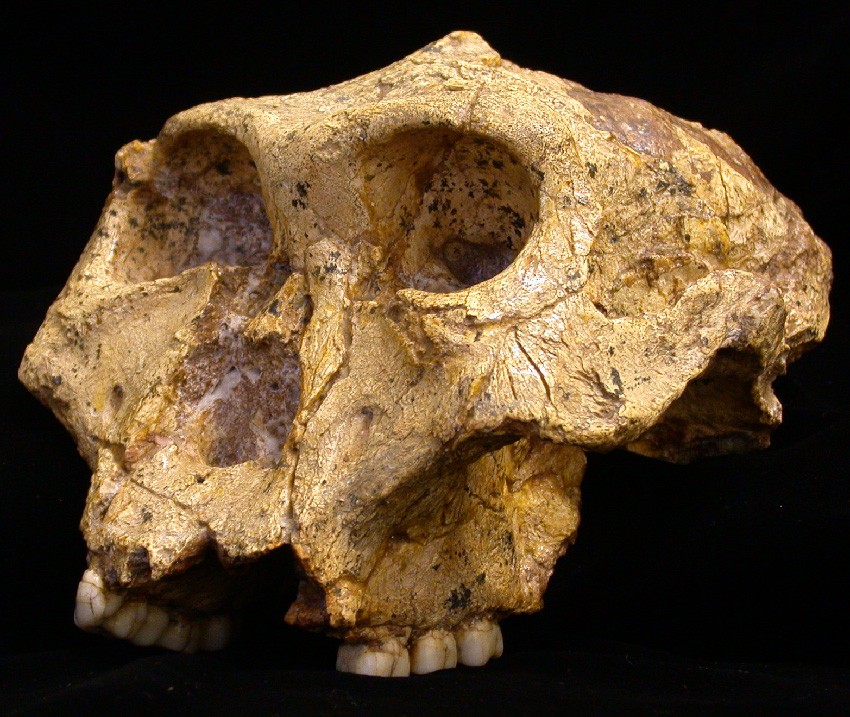Science News
The Original Mama’s Boy
June 1, 2011
by Anne Holden

Catching glimpses into our fossil ancestors’ daily lives is a tricky business. Fossil remains of our ancestors can only tell us so much concrete information, and tracing our DNA backwards in time can only get us so far.
But bones and teeth hold more clues than you’d think, if you just know how to extract them. In a new research paper published in the journal Nature, evolutionary anthropologists harnessed cutting-edge chemical tools and analyses to uncover the social patterns of our earliest ancestors and in so doing, discovered that males weren’t too keen on leaving their childhood homes.
The study, led by Sandi Copeland of the Max Planck Institute for Evolutionary Anthropology, looked at fossilized teeth from South Africa: eight Australopithecus africanus (2.2 million years ago) individuals and 11 individuals belonging to the Paranthropus robustus (1.8 million years ago) species. Using a laser, the team extracted a key element from the tooth enamel called strontium.
The strontium found in tooth enamel is like a snapshot into where the person lived during childhood, when permanent teeth developed. The various types of strontium, called isotopes, can be connected with specific geographical regions. “The strontium isotope ratios are a direct reflection of the foods these hominids ate, which in turn are a reflection of the local geology,” Copeland explains.
The research team divided sets of teeth for both species into male and female based on size (male teeth are generally larger). They then performed strontium isotope analysis on each, looking for clues into the each specimen’s childhood geographical landscape. They found that a large majority of male specimens – nearly 90% – grew up in the same general area where the fossilized teeth were uncovered. They were born, grew up, and died in pretty much the same place: the prehistoric equivalent of their hometown.
But analysis of female strontium isotopes revealed a different history. Over 50% of female remains trace to further afield, away from the dolomite cave systems that so many males grew up near. It seems that many females spent their formative years elsewhere, only arriving in the area once they reached adulthood.
Chimpanzees, our closest living primate relatives, exhibit a similar social structure. Male chimps are highly territorial, and will not leave their home base, even upon reaching adulthood. To prevent inbreeding, females are often forced to leave their childhood groups in search of new mating partners in other groups. Copeland’s strontium-isotope analysis lends support to the idea that early hominids might have done the same. If this structure exists in both chimpanzees and early hominids, perhaps its origins extend much further back in time.
“One of our goals was to try to find out something about early hominin landscape use. Here we have the first direct glimpse into the geographic movements of early hominids,” says Copeland.
The study not only provides insight into previously unknown aspects of ancient hominin social structure, it also highlights exactly how much new information can be squeezed out of a fossil specimen. As Julia Lee-Thorp, one of the study’s co-authors, explains, “Studies like these really bring home that finding and describing fossils is not the end of the story. Thoughtful application of these new analytical methods can tell us such a lot more about the details and lives of the distant past.”
Anne Holden, a docent at the California Academy of Sciences, is a PhD trained genetic anthropologist and science writer living in San Francisco.
Image: Darryl de Ruiter